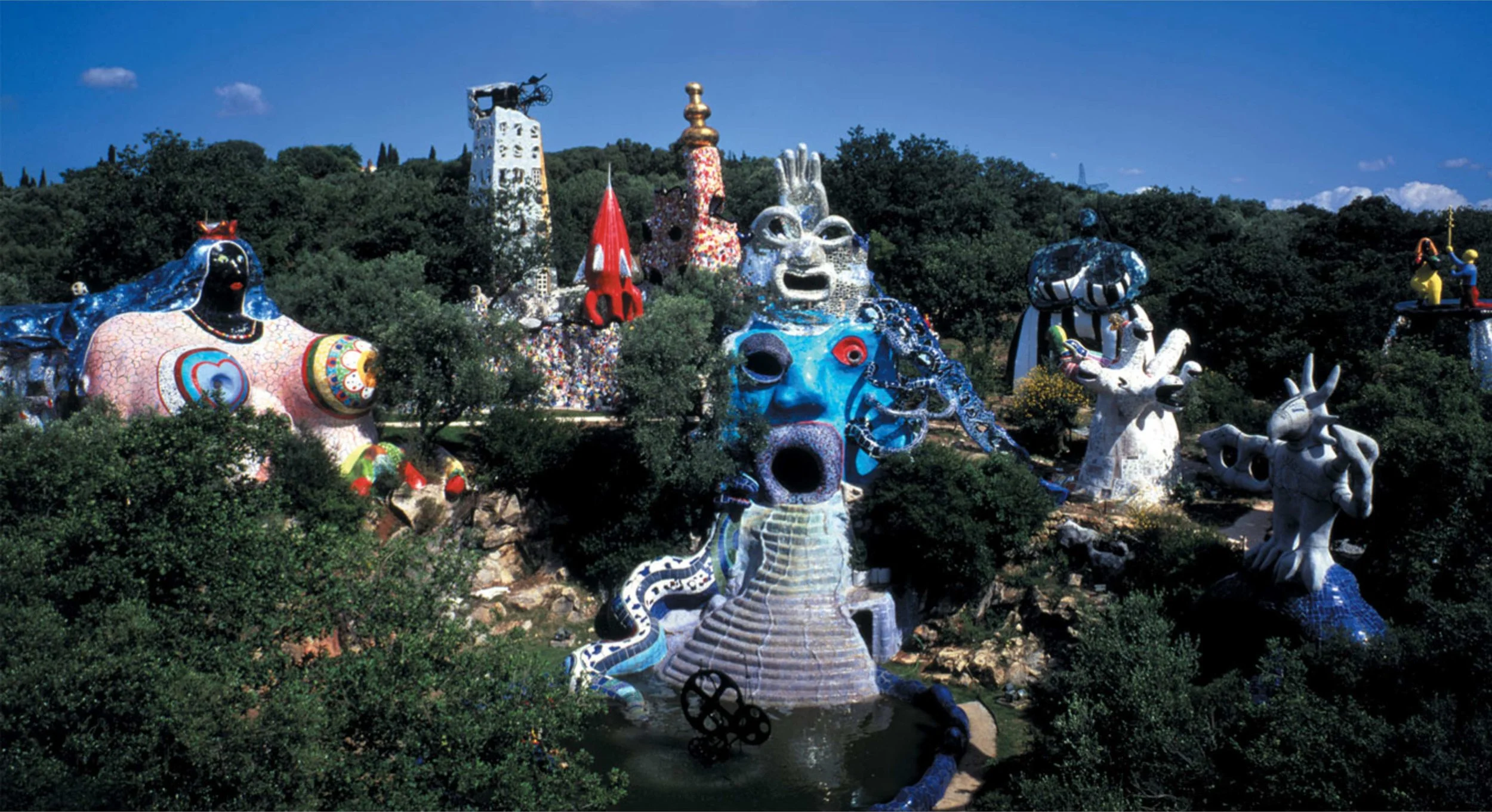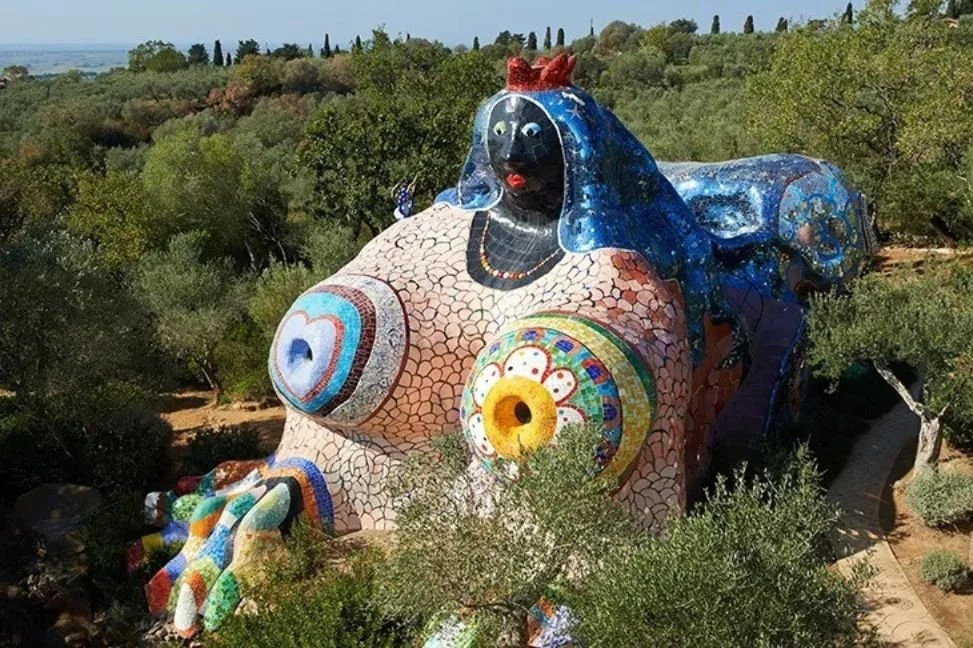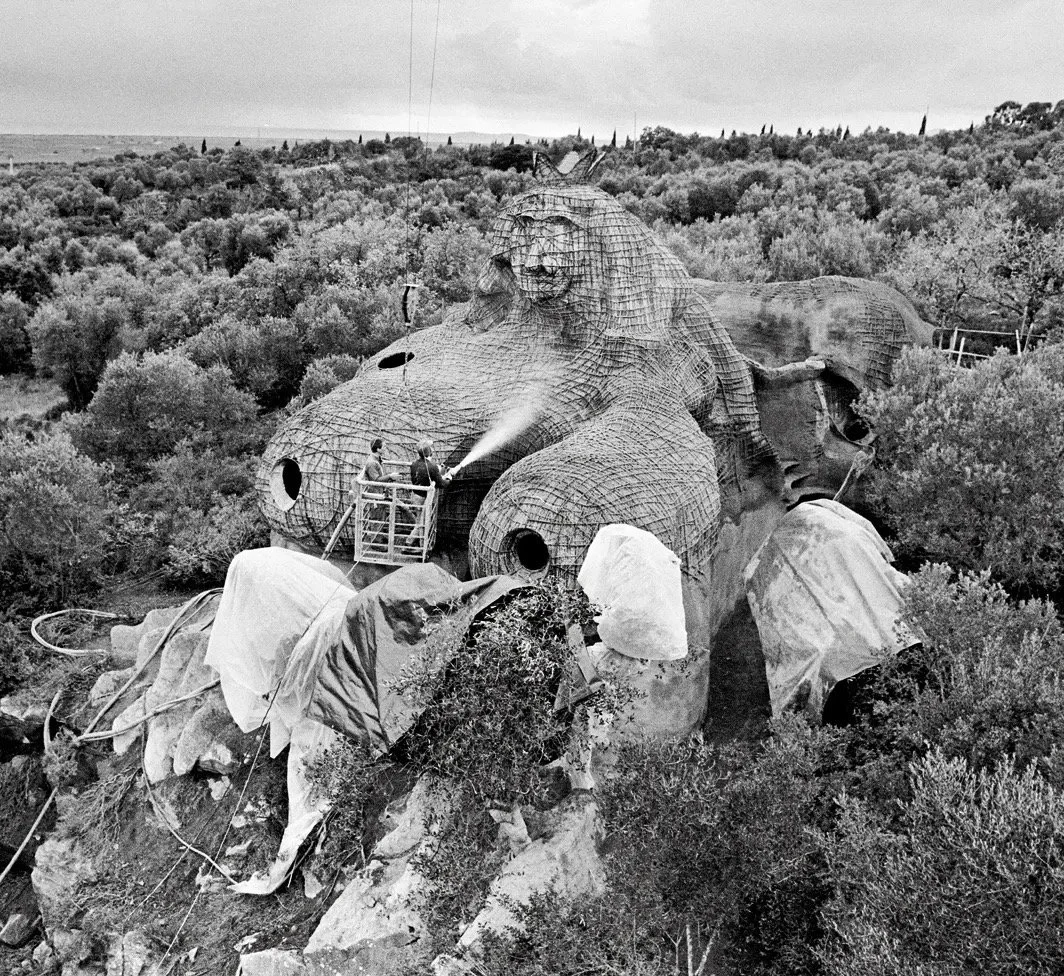Niki de Saint Phalle’s Tarot Garden
In 1979, French-American Artist Niki de Saint Phalle acquired fourteen acres, or about six hundred nine thousand square feet, of land in Tuscany, Italy in the province of Grosseto. After almost twenty years of work, she finally opened her Tarot Garden to the public in 1998. It is still accepting visitors today.
Inside this garden lives twenty-two brilliantly colored statues based on the Major Arcana of the Tarot. Each statue is a mosaic, with hundreds of thousands of small pieces of glass and ceramic tiles which were fired, shaped, and set in place with cement. This spring, I visited the Tarot Garden and was absolutely enamoured by the wonderful work Phalle created. I was so inspired by her story and distinctive style that I felt the need to tell everyone I knew about her art.
credit: Apollo Magazine
Her tallest sculpture stands at fifty feet tall and was her home for a period of time. Her bedroom was located in the left breast and kitchen in the right; she lived there for years when the garden was being built. The inside of her living quarters was carefully covered from floor to ceiling in fragments of mirrors, giving the interior a psychedelic effect. Some may find it strange to live in such an environment for so long. When visiting I found it had an effect on me after only a couple of minutes, however for Phalle, this was home.
credit: Peek
Phalle went through much struggle in her life, and was hospitalized for a short time in 1953 due to a mental breakdown. To overcome her struggle, she quit her career as an actor and set her sights on art. She began painting and ideating her dream of a garden full of sculptures and found purpose through painting and sculpting. Through observing her work, one can see how she derived personal healing and a true sense of empowerment through her creations.
She hoped that her art would help others and herself, but little did she know that just the process of constructing this garden would change lives. Phalle's garden was a utopia for artists and creatives alike. Some of the members of her team who helped her in the creation of the garden were swiss architect Mario Botta, a renowned swiss sculptor, Jean Tinguely, who was Phalle’s husband, Ugo, the postman, and many more extremely talented individuals. The grandness of even the unfinished statues created an energy in and of itself, which is still palpable for any visitors of the garden now that the garden is complete. It was this energy that allowed artists to get sucked in and feel as if they were in another world amongst these giants, this amongst other reasons kept them sticking by Phalle’s side for so long. Their shared efforts, year after year, allowed the garden to come together and become an oasis of art amongst the rich Tuscan hills.
Phalle’s relationship with Jean Tinguely was one of wonder, as their art styles were so different and to see their styles merge together from the bounds of love was truly beautiful. Anyone who knew them knew how incredibly charming they were because their lives were truly centered around their art; their soul purpose was to create. Tinguely began his work in the garden right from the beginning in 1979,, helping to form the iron sculptures and implement some of the mechanics within them. He has some surprises of his own, one can be discovered inside of the sculpture: Justice. Another of his sculptures is the Wheel of Fortune which can be spotted in front of the High Priestess.
Wheel of Fortune
The process of making the larger sculptures was a long, labor intensive, and fully immersive experience for Phalle and everyone on her team. The basic structure of the sculptures were first welded with iron, covered again with another layer of iron, then covered with a layer of wire mesh.
credit: Nanquick.com
Then, they were coated in layers of concrete. In 1984, Marco LIacotonio gave the final touches of the concrete making many of the sculptures mosaic ready. Over many years, each sculpture was created and positioned, and after a while everything just seemed to fall into place. The tarot garden was officially inaugurated on May 15th, 1998.
Phalle's work has an undeniable impact on all who enter the garden. Her statues that were created in the 80s and 90s stand tall and proud, among plants that have just sprouted that very year. It is clear Phalle’s impact and presence isn't going away anytime soon. Phalle passed away on May 21st, 2002, of respiratory failure, though her reputation as a sculptor, painter, author and filmmaker still lives on and her work continues to touch the lives of many. I, for one, will never forget my visit to The Tarot Garden.
Sources
https://www.newyorker.com/magazine/2016/04/18/niki-de-saint-phalles-tarot-garden
https://ilgiardinodeitarocchi.it/en/about/chronology/#1978-1980
https://nikidesaintphalle.org/niki-de-saint-phalle/biography/#1930-1949
About the author: Amelia Gaviglio is a Junior with an Advertising major & Food Studies minor at University of Oregon. She is from Orange County in Southern California. Her favorite season is summer and she loves to be outdoors. She has an obsession with the art section of the New York Times and Anthony Bourdain. She loves to cook, bake, code, do yoga, watch old movies, listen to old radio shows and relax to smooth jazz.






